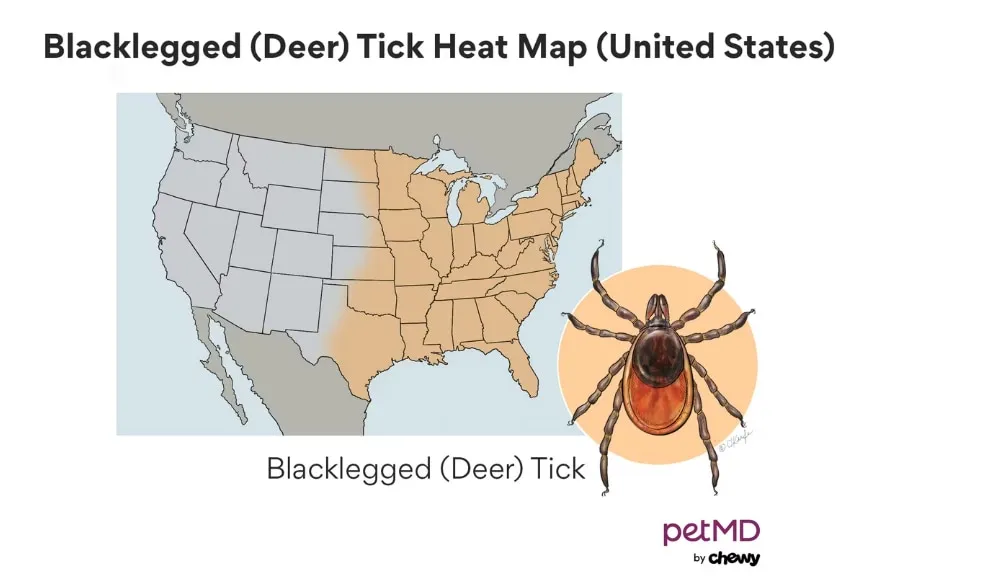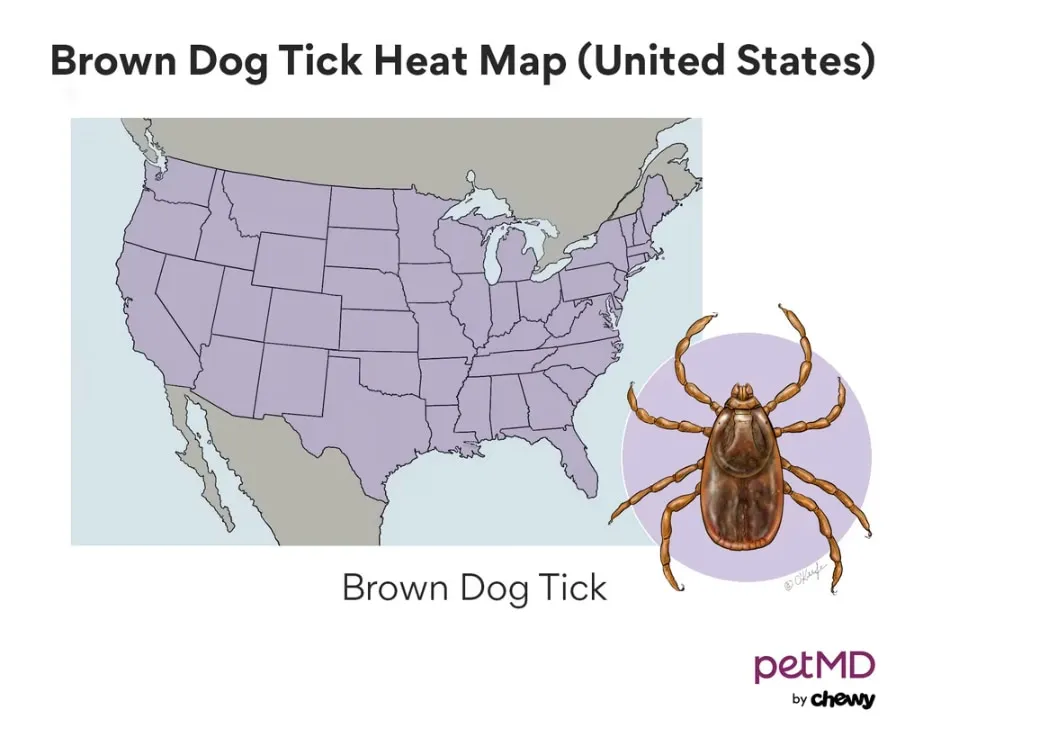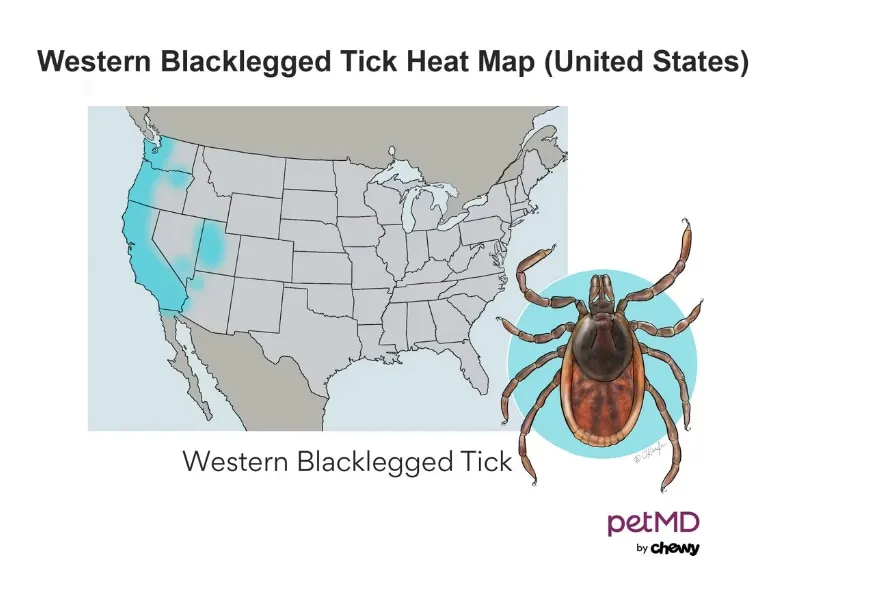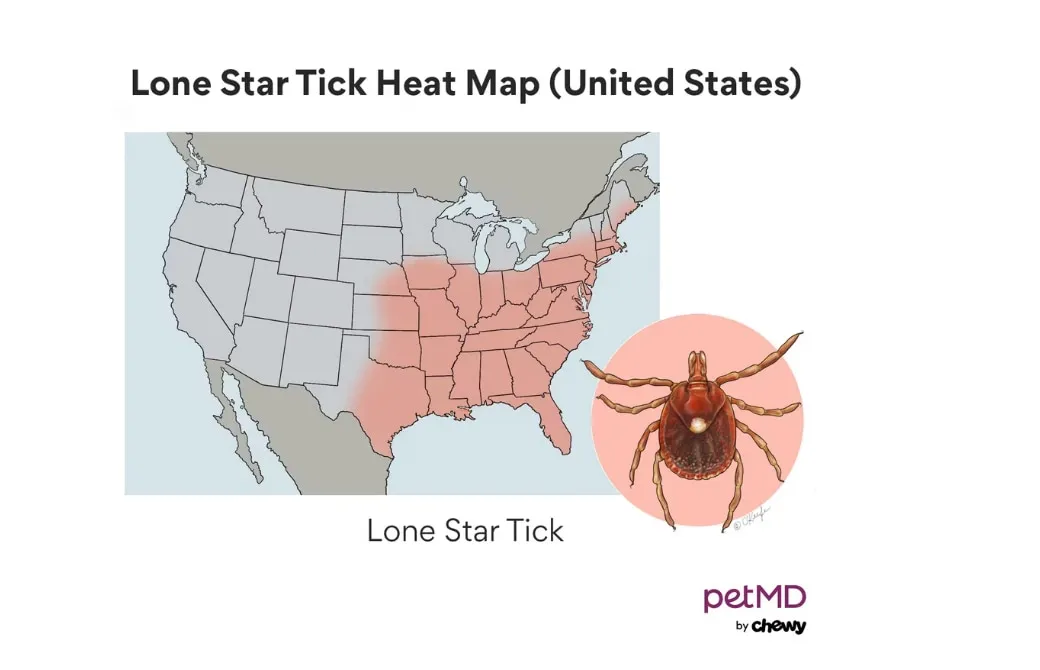Preventative care is foundational to ensuring your dog leads a healthy and happy life. Among the most critical aspects of this care is consistent protection against fleas and ticks, parasites that can significantly impact your pet’s well-being and even spread diseases to humans. While various preventative options exist, topical flea treatments for dogs offer a convenient and effective solution for many pet owners. This guide delves into everything you need to know about choosing the Best Topical Flea Treatment For Dogs, ensuring your furry friend remains protected year-round.
Understanding Fleas and Ticks: Why Prevention is Paramount
Fleas and ticks are external parasites (ectoparasites) that live on the outside of their host, relying on blood meals to survive. Their bites are not just an annoyance; they can directly impact your dog’s health in severe ways. Implementing a reliable preventative strategy, such as using the best topical flea tick treatment for dogs, is essential to safeguard your pet.
The Dangers of Flea Bites
Flea saliva can trigger allergic reactions in some dogs, leading to severe itching, skin irritation, and a condition known as flea allergy dermatitis. Persistent scratching can result in secondary bacterial skin infections. In young puppies or severely infested dogs, significant blood loss from fleas can cause anemia, a potentially life-threatening condition. Beyond direct physical effects, fleas can also transmit tapeworms if ingested by your dog.
The Risks of Tick-Borne Diseases
Tick bites pose an even greater threat, capable of causing localized infections, abscesses, paralysis, and in extreme cases, even death. Ticks are notorious for harboring and spreading a variety of serious diseases to dogs, including Lyme disease, Anaplasmosis, Ehrlichiosis, and Rocky Mountain Spotted Fever. Some of these debilitating conditions can be challenging to treat and may lead to long-term health complications. Furthermore, certain tick-borne illnesses can be transmitted to humans, underscoring the critical importance of keeping ticks off your dog and out of your home environment. Early detection and treatment, sometimes including a best mange treatment for dogs if secondary issues arise, are crucial for your pet’s health.
When Your Dog Needs Flea and Tick Prevention
Fleas and ticks are incredibly resilient and can thrive in diverse geographical areas and climates. This hardiness means they are not just a seasonal threat but a year-round concern. To provide continuous protection against these disease-carrying parasites, veterinarians universally recommend starting flea and tick prevention for dogs as early as 8 weeks of age and maintaining it consistently throughout their entire lives, regardless of the season. Even in colder months, dormant parasites can awaken or indoor environments can sustain flea populations, making year-round protection vital.
Oral vs. Topical Flea and Tick Treatments: A Key Decision
When considering flea and tick prevention, dog owners typically choose between oral medications and topical applications. While oral treatments are gaining popularity, topical spot-on treatments remain a highly effective and preferred option for many, particularly when seeking the best topical flea treatment for dogs. Understanding the distinctions between these methods is crucial for making an informed choice.
Advantages of Topical Flea Treatments
Topical flea treatments, often applied as a liquid between the shoulder blades or down the back, are absorbed through the skin and spread over the body, killing parasites on contact or after they bite. They are an excellent choice for dogs who are picky eaters or have sensitive stomachs, as there’s no need for ingestion. For dogs that require protection against external parasites only, topical solutions are straightforward. Furthermore, some topical products offer a repellent effect against certain parasites like mosquitoes, which oral medications typically do not.
Considerations for Topical Applications
While effective, topical treatments come with their own set of considerations. After application, it’s crucial to ensure the product dries completely to avoid accidental exposure to small children or other pets who might touch or lick the treated area. The waiting period for drying can range from a few hours to 24 hours. Topical treatments may also be less suitable for dogs that frequently swim or require regular baths, as water exposure can reduce the product’s efficacy, requiring careful timing of application relative to bathing schedules. Always consult the product label for specific instructions regarding water exposure.
When Oral Treatments Might Be Preferable
Oral flea and tick medications are often flavored chewable tablets, making them easy to administer like a treat. They work internally, circulating active ingredients through the dog’s bloodstream. Oral treatments are a good option for highly active dogs, those that swim often, or in households with young children and other pets where accidental contact with topical residue is a concern. However, it’s important to ensure your dog consumes the entire tablet and doesn’t vomit it up before absorption.
Key Factors in Choosing the Best Topical Flea Treatment for Your Dog
Selecting the most suitable topical flea treatment for your dog involves considering several individualized factors. Consulting with your veterinarian is paramount before making a decision, as they can provide tailored advice based on your dog’s specific needs and local parasite risks. Reviewing the product label is also essential to ensure it aligns with your pet’s species, weight, and lifestyle.
The best topical flea treatment for dogs must protect against the appropriate parasites and be administered correctly according to its instructions. You should also be aware of any potential safety concerns or what steps to take in the rare event of an adverse reaction.
Geographical Considerations and Local Parasites
The prevalence of different parasite species, including various fleas and ticks, varies significantly by geographical location. For instance, certain tick species that transmit specific diseases might be common in one region but rare in another. Resources like the Companion Animal Parasite Council (CAPC) provide valuable, localized data on parasite populations, helping you understand the specific risks in your area. This information is crucial for selecting a topical preventative that offers comprehensive protection against the parasites most likely to affect your dog.
 Close-up of a common tick species, highlighting its body and legs, relevant for geographical parasite identification.
Close-up of a common tick species, highlighting its body and legs, relevant for geographical parasite identification.
Your Dog’s Exposure to the Outdoors
Consider the typical environments where your dog spends time. Areas such as dog parks, hiking trails, dense woods, public parks, tall bushes, and even your backyard can be hotspots for fleas and ticks. Dogs that frequent these areas, especially wooded or grassy spaces where other animals roam, have a higher risk of parasite exposure. However, even predominantly indoor dogs require protection. Fleas can easily enter your home through window screens, on other pets that venture outside, or even hitch a ride on human clothing and shoes. For this reason, veterinarians consistently recommend year-round topical flea and tick prevention for all dogs, regardless of their time spent outdoors.
 Engorged tick attached to dog fur, emphasizing the importance of best topical flea treatment for dogs.
Engorged tick attached to dog fur, emphasizing the importance of best topical flea treatment for dogs.
Breed-Specific Sensitivities (MDR-1 Gene)
Certain dog breeds, including Collies, Australian Shepherds, and Shetland Sheepdogs, may carry a specific gene mutation known as MDR-1. This mutation affects how their bodies process and break down certain medications, potentially making them more susceptible to adverse reactions. While many topical parasite preventatives have been tested for safety in dogs with the MDR-1 mutation, it is always wise to inform your veterinarian if your dog is an affected breed. They may recommend testing for the MDR-1 gene or opting for a product known to be safe for such sensitivities, ensuring you find a flea and tick treatment for sensitive dogs.
 Multiple ticks on a blade of grass, showing common outdoor habitats where dogs pick up parasites.
Multiple ticks on a blade of grass, showing common outdoor habitats where dogs pick up parasites.
Lifestyle and Activity Levels
While no specific breed is inherently more prone to acquiring fleas or ticks, a dog’s lifestyle and breed characteristics can influence their risk. Working, herding, or hunting dogs, for instance, might spend extensive periods in fields or wooded areas, increasing their exposure to parasites. In contrast, companion dogs content with staying primarily at home, venturing outdoors only occasionally, may have a lower but still present risk. Your dog’s activity level and typical routine should factor into the choice of preventative, ensuring it aligns with their exposure profile.
 Different stages of a tick's life cycle, from nymph to adult, illustrating the need for year-round best topical flea treatment for dogs.
Different stages of a tick's life cycle, from nymph to adult, illustrating the need for year-round best topical flea treatment for dogs.
Age and Life Stage: Puppies and Senior Dogs
The age and life stage of your dog are critical factors in selecting an appropriate topical treatment. Most topical flea and tick preventatives have a minimum age requirement, typically 8 weeks, and often a minimum weight threshold. It is crucial to verify these details on the product’s package insert. For very young puppies, specific formulations like Revolution Topical Solution for Kittens and Puppies are designed for safe use as early as 6 weeks of age. Always consult your veterinarian to ensure the product is suitable for your puppy’s age and weight, or for older dogs who might have different sensitivities.
Pre-existing Medical Conditions
It is imperative to discuss your dog’s full medical history with your veterinarian before starting any new flea and tick preventative, especially if they have pre-existing conditions. For example, some topical products, particularly those containing specific insect growth regulators or insecticides, should be used with caution in dogs with a history of seizures or other neurological conditions. If your dog has previously experienced an allergic reaction to a medication, is unwell or underweight, or is pregnant, nursing, or intended for breeding, no preventative should be administered without a thorough consultation with your vet. Their professional guidance is essential to ensure both safety and efficacy.
Over-the-Counter vs. Prescription Topical Flea Treatments
The market for flea and tick preventatives includes both over-the-counter (OTC) and prescription-only options. Understanding the differences between these categories is important for choosing the best topical flea treatment for dogs.
Navigating OTC Topical Options
Over-the-counter topical flea and tick preventatives are readily available without a veterinarian’s prescription, often found online or in pet supply stores. These products offer convenience and can be a good choice for some dogs. However, their accessibility does not negate the need for caution. The active ingredients and concentrations in OTC products can vary widely, and some may not be as potent or broad-spectrum as their prescription counterparts. If you opt for an OTC topical flea and tick preventative, it is still highly recommended to check with your veterinarian to confirm it is a safe and effective choice for your specific pet’s needs and local parasite risks. You can explore more about flea and tick medicine over the counter options.
The Benefits of Prescription Topical Solutions
Prescription topical flea and tick preventatives require a veterinary prescription, typically after an examination and discussion of your dog’s health history. While they might have a slightly higher cost, most veterinarians recommend prescription products due to their often superior efficacy and established safety profiles. These products usually contain newer, more advanced active ingredients that offer broader protection against multiple parasites and have undergone rigorous testing. Your vet can guide you to the best prescription topical flea treatment for dogs, ensuring it’s the most appropriate and powerful protection available for your pet.
Top Topical Flea and Tick Treatments for Dogs
Here’s an overview of some popular and effective topical flea and tick treatment options, detailing their active ingredients, target parasites, and key considerations.
Advantage II
Advantage II is a monthly topical product designed specifically for dogs and puppies over 7 weeks old and weighing more than 3 pounds. Its active ingredients, imidacloprid and pyriproxyfen, work quickly to kill all life stages of fleas, including eggs, larvae, and adults, typically within hours. It is also effective against chewing lice. A crucial point to remember is that Advantage II does not provide tick prevention.
Advantage Multi
Advantage Multi is a comprehensive monthly topical solution suitable for dogs and puppies over 7 weeks old and weighing more than 3 pounds. This powerful product combines imidacloprid and moxidectin to treat and control fleas, sarcoptic mange, and intestinal parasites such as hookworms, roundworms, and whipworms. Additionally, it provides essential prevention against heartworm disease. Advantage Multi is fast-acting against fleas, killing them within hours, while other parasites may take up to 24 hours. Like Advantage II, this formulation does not offer tick prevention.
Bravecto Topical Solution
Bravecto is available as both a chewable tablet and a topical solution, containing the active ingredient fluralaner from the isoxazoline drug class. The topical solution is highly effective, starting to kill fleas within two hours and ticks within 12 hours. Bravecto provides extended protection for up to 12 weeks (3 months) against fleas and ticks. It has also shown efficacy against demodectic, sarcoptic mange, and ear mites. As an isoxazoline, Bravecto products should be used with caution in dogs with a history of seizures, epilepsy, or other neurological disorders, requiring a thorough discussion with your veterinarian.
Frontline Gold
Frontline Gold is a monthly topical treatment that provides fast-acting protection against fleas, ticks, and chewing lice. Its active ingredients are fipronil, (s)-methoprene, and pyriproxyfen. This combination works quickly, typically killing fleas and ticks within hours of application. Frontline Gold is suitable for dogs and puppies over 8 weeks old and weighing more than 5 pounds.
Frontline Plus
Frontline Plus is another popular monthly topical product that utilizes fipronil and (s)-methoprene. This formulation effectively kills fleas, ticks, and chewing lice. While fast-acting, it may take slightly longer to kill parasites compared to Frontline Gold. Frontline Plus is recommended for dogs and puppies over 8 weeks old and weighing more than 5 pounds.
Frontline Shield
Frontline Shield offers broad-spectrum protection as a monthly topical treatment. Its active ingredients, fipronil, permethrin, and pyriproxyfen, work to kill all fleas, ticks, chewing lice, and stable flies. Additionally, it provides a repellent effect against mosquitoes, stable flies, and ticks. Frontline Shield is notably fast-acting, with fleas beginning to die within five minutes and ticks within one hour. It should be used only in dogs and puppies over 9 weeks old and weighing more than 5 pounds. Important caution: This product is highly toxic to cats due to the permethrin content, requiring extreme care or avoidance in multi-pet households with cats.
K9 Advantix II
K9 Advantix II is a monthly topical solution that provides comprehensive protection by both repelling and killing parasites. Containing imidacloprid, permethrin, and pyriproxyfen, it targets and eliminates fleas, ticks, mosquitoes, and chewing lice, while also repelling biting flies. K9 Advantix II begins to kill parasites within hours of application. It is formulated for dogs and puppies over 7 weeks old and weighing more than 4 pounds. Critical warning: Similar to Frontline Shield, K9 Advantix II is highly toxic to cats, so extreme caution must be exercised in households with feline companions.
Onguard Plus
Onguard Plus is a monthly topical product containing fipronil and (s)-methoprene. This combination effectively kills all fleas, ticks, sarcoptic mange mites, and chewing lice. It is suitable for dogs and puppies over 8 weeks old and weighing more than 5 pounds.
Seresto Collar
The Seresto collar offers a unique topical delivery system, providing long-lasting protection against fleas and ticks for up to eight months. The collar contains two active ingredients, imidacloprid and flumethrin, which are released in low concentrations and spread over the dog’s skin and coat. Fleas are typically killed within 24 hours of application, and ticks within 48 hours. If a dog bathes or swims frequently (more than once a month), the collar’s efficacy may decrease, potentially requiring replacement as often as every five months. The Seresto collar is designed for dogs and puppies over 7 weeks of age.
Vectra 3D
Vectra 3D is a powerful monthly topical product that repels and kills a wide array of parasites. Its active ingredients—dinitofuran, permethrin, and pyriproxyfen—are effective against fleas, ticks, mosquitoes, chewing lice, sand flies, biting flies, and some mites. Vectra 3D begins killing parasites within hours of application. It is intended for use in dogs and puppies over 8 weeks old and weighing more than 5 pounds. Crucial safety note: Like K9 Advantix II and Frontline Shield, Vectra 3D is highly toxic to cats and should be used with extreme caution or avoided in homes with cats.
Conclusion
Choosing the best topical flea treatment for dogs is a critical aspect of responsible pet ownership, safeguarding your companion from irritating bites, skin conditions, and potentially life-threatening diseases. With a range of effective topical spot-on treatments and collars available, it’s essential to consider your dog’s individual needs, lifestyle, geographical location, and any existing medical conditions. Always prioritize a discussion with your veterinarian, who can offer expert guidance tailored to your pet, ensuring you select the most appropriate and safest preventative. Year-round prevention is key, and with the right choice, you can help your dog live a healthier, happier, and parasite-free life. Continue exploring our site for more valuable insights into dog health and care.
References
- PetMD. “Best Flea & Tick Medications for Dogs.” PetMD.
- Companion Animal Parasite Council (CAPC). “Parasite Prevalence Maps.” CAPCvet.org.
- Lauren Jones, VMD. Veterinarian, PetMD.
